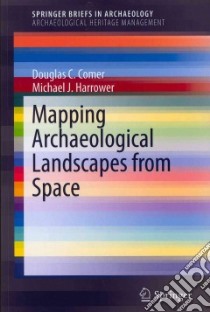Mapping Archaeological Landscapes from Space - 9781461460732
Un libro in lingua di Comer Douglas C. Harrower Michael J. edito da Springer Verlag, 2013
- € 39.60
- Il prezzo è variabile in funzione del cambio della valuta d’origine
? Given the rising awareness and interest in aerial and satellite remote sensing, there is a need to familiarize archaeologists with the basic principles and applications of what have become the most useful technologies. This volume, in the Springerbriefs Archaeologial Heritage Management series, accomplishes this. Contributions to the volume come from those who have been active in developing key technologies as well as those who have been most successful in applying them. Leading experts, most of them from NASA, concisely describe what needs to be understood in order to utilize images produced from data collected by the most important airborne and satellite sensing devices.. Exemplary applications of these technologies are presented in brief by archaeologists who have made notable discoveries using them or have contributed to archaeological resource preservation. Among the technologies examined are those that are undergoing rapid refinement and will be carried by an increasing number of aerial and satellite platforms, such as synthetic aperture radar (SAR), Lidar, and multispectral/hyperspectral sensors, as well as older space technologies now made more useful by the availability of increasingly sophisticated computer hardware and software. Of particular importance is the ability to model how development in and around archaeological sites and landscapes can damage or destroy archaeological materials. Nurturing the development and application of space and aerial technologies in archaeology is therefore a matter of the greatest urgency, an appropriate goal to adopt by governments and universities at the 40th anniversary of the World Heritage Convention. Researchers gain a sense of what is possible by the use of these technologies, and why they should be used.
Informazioni bibliografiche
- Titolo del Libro in lingua: Mapping Archaeological Landscapes from Space
- Lingua: English
- Autori : Comer Douglas C. Harrower Michael J.
- Editore: Springer Verlag
- Collana: Springer Verlag (Paperback)
- Data di Pubblicazione: 09 Gennaio '13
- Genere: SOCIAL SCIENCE
- Pagine: 276
- Dimensioni mm: 233 x 154 x 0
- EAN-13: 9781461460732


